By Michele Leggott
It is 1961. Brothers Philip Winning and Hugh Godfrey Briant look over family papers and books passed down from their late mother Gretchen Briant née Weyergang and decide to gift a letter and a dictionary to the Taranaki Museum. The brothers farm at Bonny Glen, Marton and have been talking to their mother’s cousins in New Plymouth. Between February and August Ruth Moore (89) and her sister Ella Grace Hobbs (83) have made extensive donations to the newly reopened museum, laying the foundations of the Harris collection at present-day Puke Ariki. The sisters’ gifts to the museum include Emily’s diaries, Sarah’s first letter from New Zealand, paintings by Frances, Edwin’s music books and a Spanish guitar in its case.

The Briant brothers receive acknowledgement of their gift of Harris materials early in October and the museum register records the donation:
29/9/61. Mr G.W. and H.G Briant. Bonny Glen. Marton.
-
- 1 letter to Captain Hobson per Edwin Harris from Plymouth, England.
- 1 dictionary of NZ language – Wm Williams B.A. Signed Edwin Harris.
(ARC2004-214/3 Taranaki Museum Accession Register R6/2/2. 1959-1964)
The letter to Captain Hobson from James Meadows Rendel, dated 1840 and testifying to Edwin’s employability in the new colony, is simple enough to locate in the museum’s collections. It becomes the second component of The Family Songbook: Harris Letters and Memoirs 1840-1853:
Plymouth, 28 October 1840
My dear Sir,
I rejoice to hear of your restored health and the success that has attended your efforts as Governor of a country which promises to be a happy home for thousands who would have to live here in poverty and helplessness.
The kind promises which you made before leaving England, and the encouragement given by Mrs Hobson in her letter to Miss Smith, have induced me to recommend Mrs Rendel’s brother (Mr Edwin Harris) to try his fortunes in New Zealand. This letter will I expect be delivered to you by him.
That you may be able to form some idea of his qualifications thus to say that he was in my office for six years, that during the time he was actively employed as an Engineering and Land Surveyor and in looking after some work, and that he is a skilful surveyor, and neat draughtsman, a very fair artist, and has had a good education. I am quite sure that if you can employ him in any situation in which the qualifications above named are a recommendation, that you will be well and faithfully served.
As Mrs Rendel will write Mrs Hobson, all the Plymouth news will be better together, therefore I will only add that I earnestly hope you will have your health, to see the great work of your own hands prosper, and your comforts may be made complete by the blessing of health and happiness in your family.
With kindest regards to Mrs Hobson, believe me my dear Sir
Yours most truly
J M Rendel
Capt Hobson died before my father could deliver this letter. Mary Weyergang
__________________________________
MS letter to Captain William Hobson (RN), Lieutenant-Governor, NZ. Written in Plymouth England, 28 October 1840. Undated MS annotation by Edwin Harris’s daughter Mary Weyergang. Puke Ariki. ARC2003-781.
__________________________________
Edwin Harris’s copy of William Williams’ Māori dictionary was more difficult to find. Researcher Susannah Whaley located it among the four editions held in the Taranaki Research Centre’s heritage collection at Puke Ariki, signed and dated on the title page and the only first edition in the library. The dictionary was published at Paihia by the Church Missionary Society in 1844 and Edwin acquired his copy in 1850 when he was still surveying for the Government under the direction of Donald McLean. Susannah’s notes evoke the condition of the book and an interesting though unattributed insert:
The dictionary itself is very worn. It has a brown cover with a darker brown binding. Spine broken. Some of title still visible on side but mostly ripped. Pages loose. Held together by plastic jacket museum has placed on top. Pages yellowed, edges of pages especially browned and brittle. Pencil marks on some pages (note: these are not deliberately made marks, but look as though pencil has been accidentally drawn across page). Page xxxv has tucked inside it what appears to be a small square cut from a newspaper. It has a printed sketch of a dark man wearing a one shoulder lighter coloured tunic and carrying a spear with greenery in the background – the two trees on either side of him have had their leaves coloured in green. Below him is the word ‘Zea-land-er’ separated into syllables.
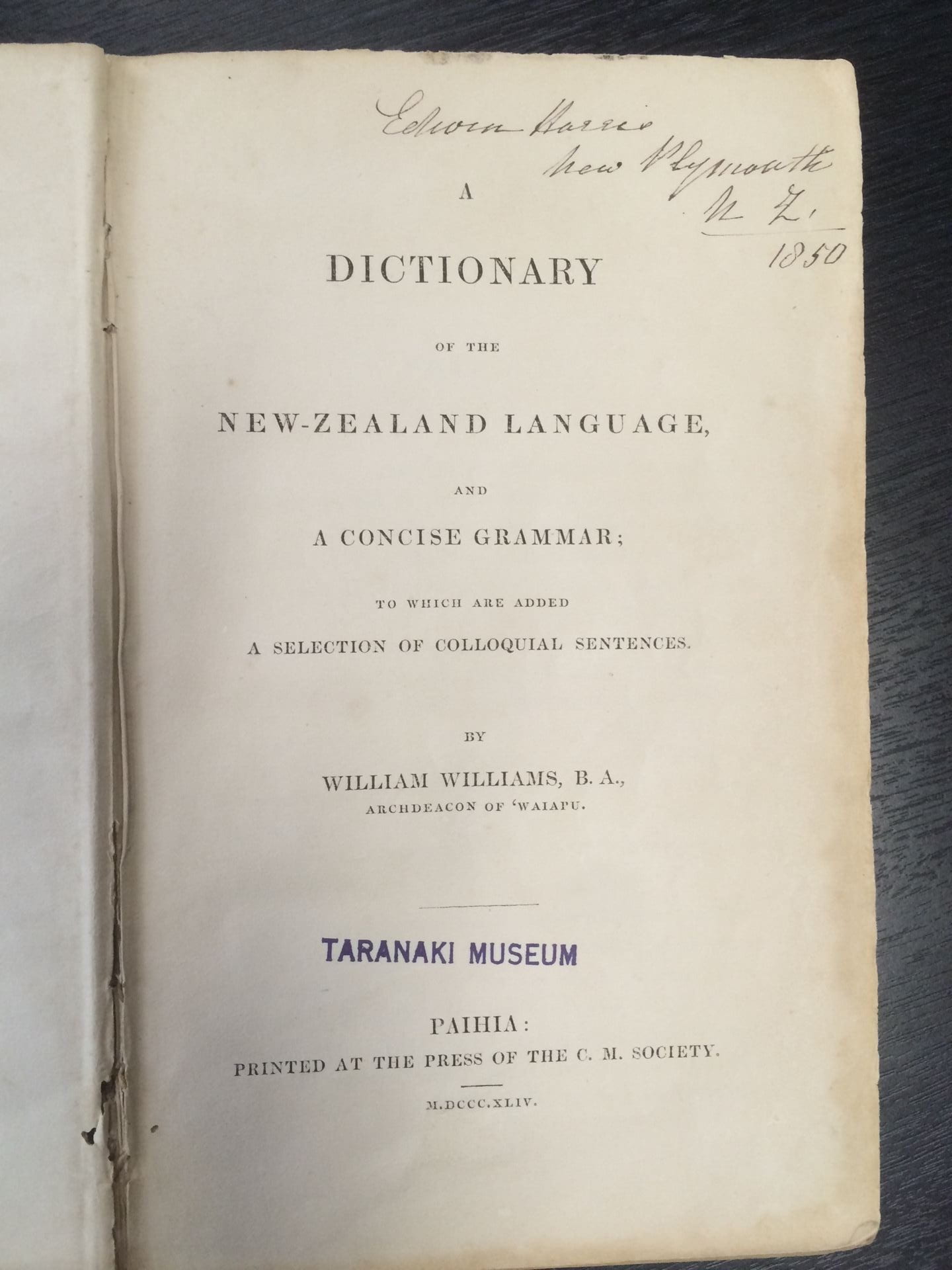

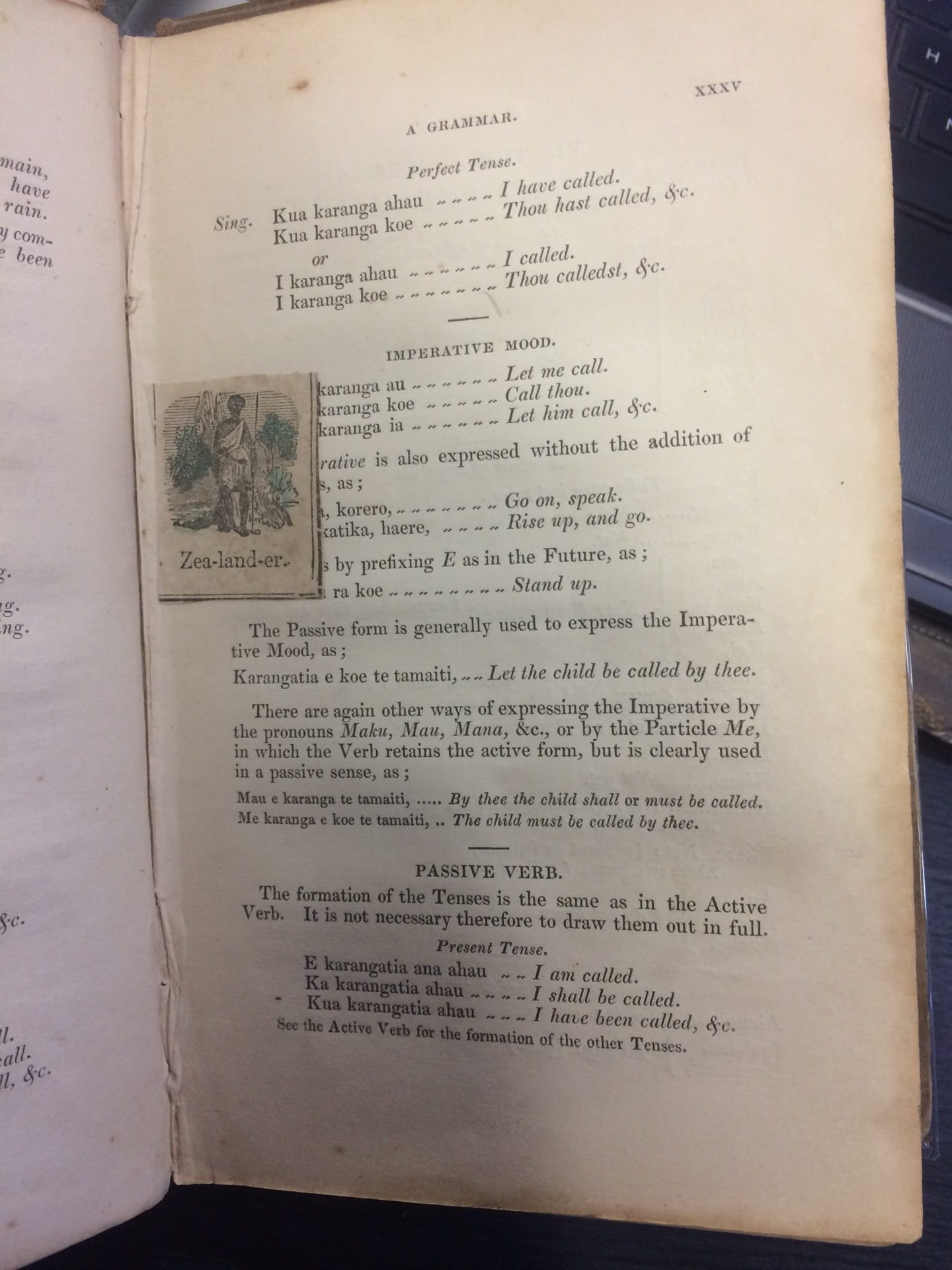
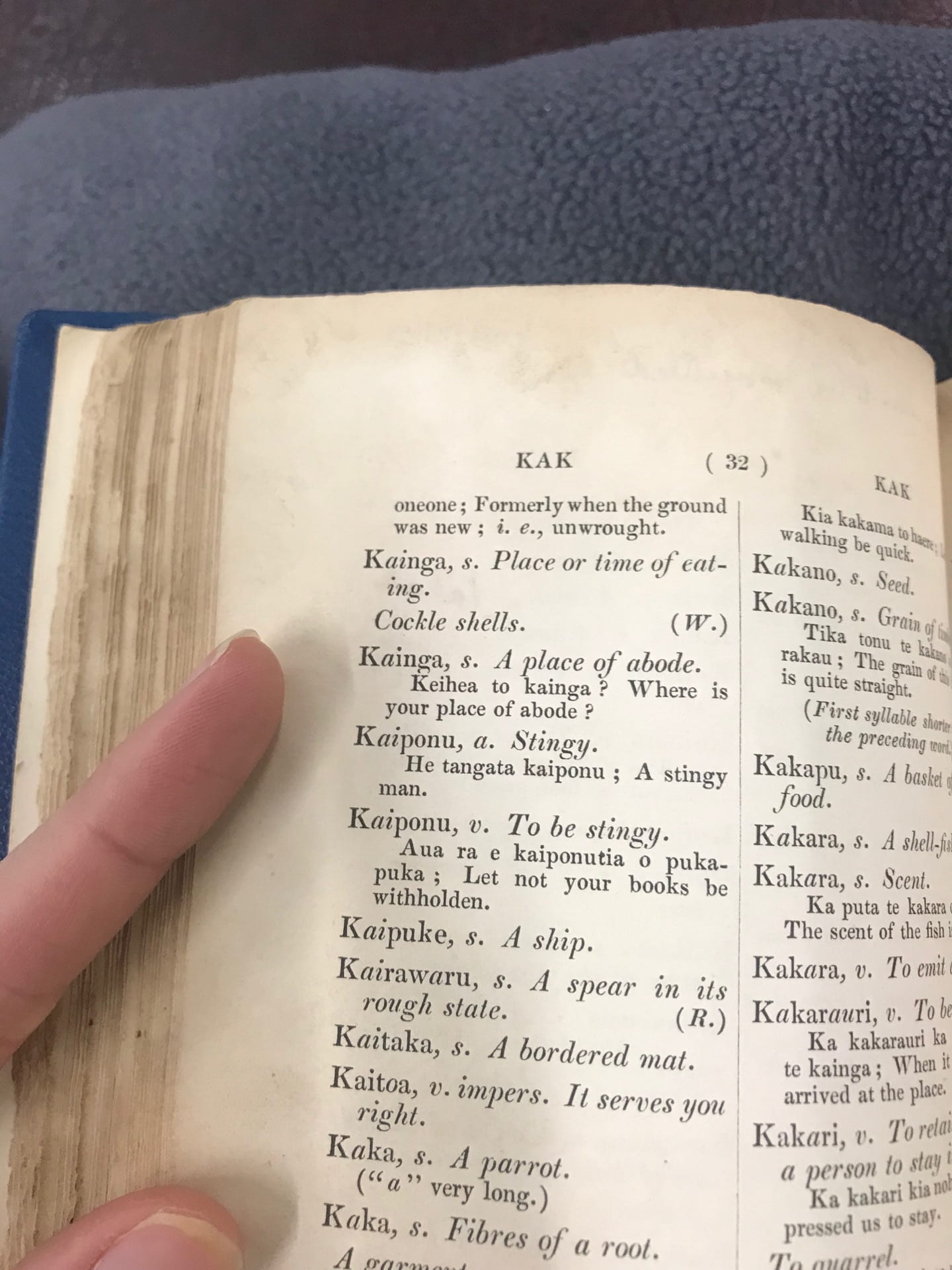
The first edition of A Dictionary of the New-Zealand Language was followed by later editions that kept the work firmly identified with Williams and his descendants. Biographer Frances Porter observed of Williams:
In 1844 he was with the ‘Translation Syndicate’ at Waimate, but mostly he worked alone, conferring from time to time with Robert Maunsell. His enduring memorial is A dictionary of the New Zealand language, first published at Paihia in 1844. The second edition was also his work, the third and fourth that of his son, Bishop William Leonard Williams, and the fifth, of his grandson, Bishop Herbert William Williams. (Te Ara)
Williams’ dictionary wasn’t the only book Edwin Harris acquired in 1850. Among the Briant brothers’ Harris materials was a copy of biologist, comparative anatomist and paleontologist Richard Owen’s 1833 publication The zoological magazine: or journal of natural history, being a series of miscellaneous articles, original and translated, on interesting subjects in Zoology, &c.. No. 1-6. The book was published in London and is one of Owen’s early monographs. Edwin’s copy has no title page and his details appear on the initial page of the first article: ‘Edwin Harris / New Plymouth / 1850.’ A second inscription, on blue-lined paper, has been pasted onto one of the blank pages that precede the text. It shows Emily Harris gifting the book to her nine-year-old great nephew Hugh Godfrey Briant: ‘For my dear Grand Nephew / Godfrey Briant / With love from / Aunt Emily / Dec 1912.’

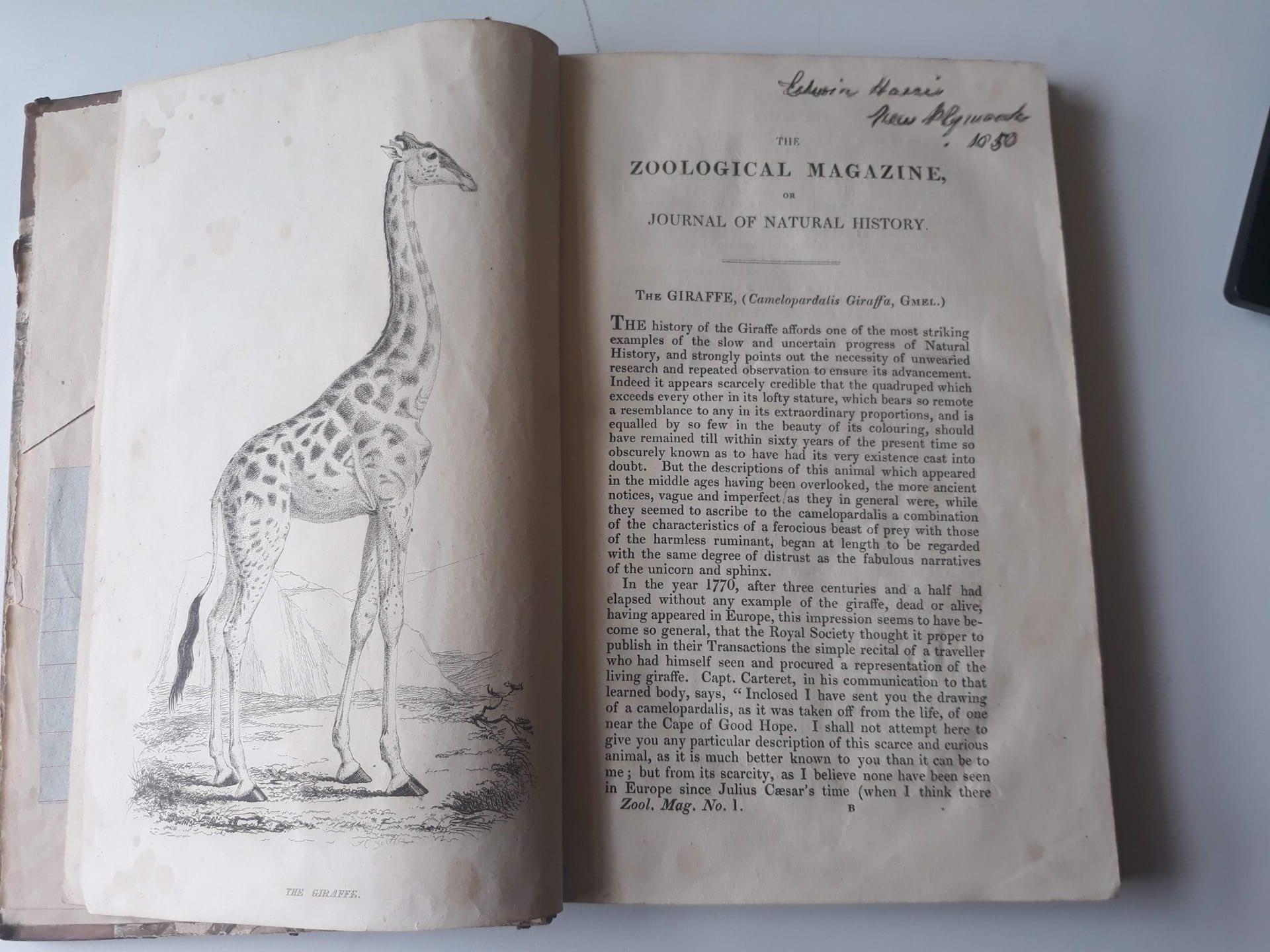
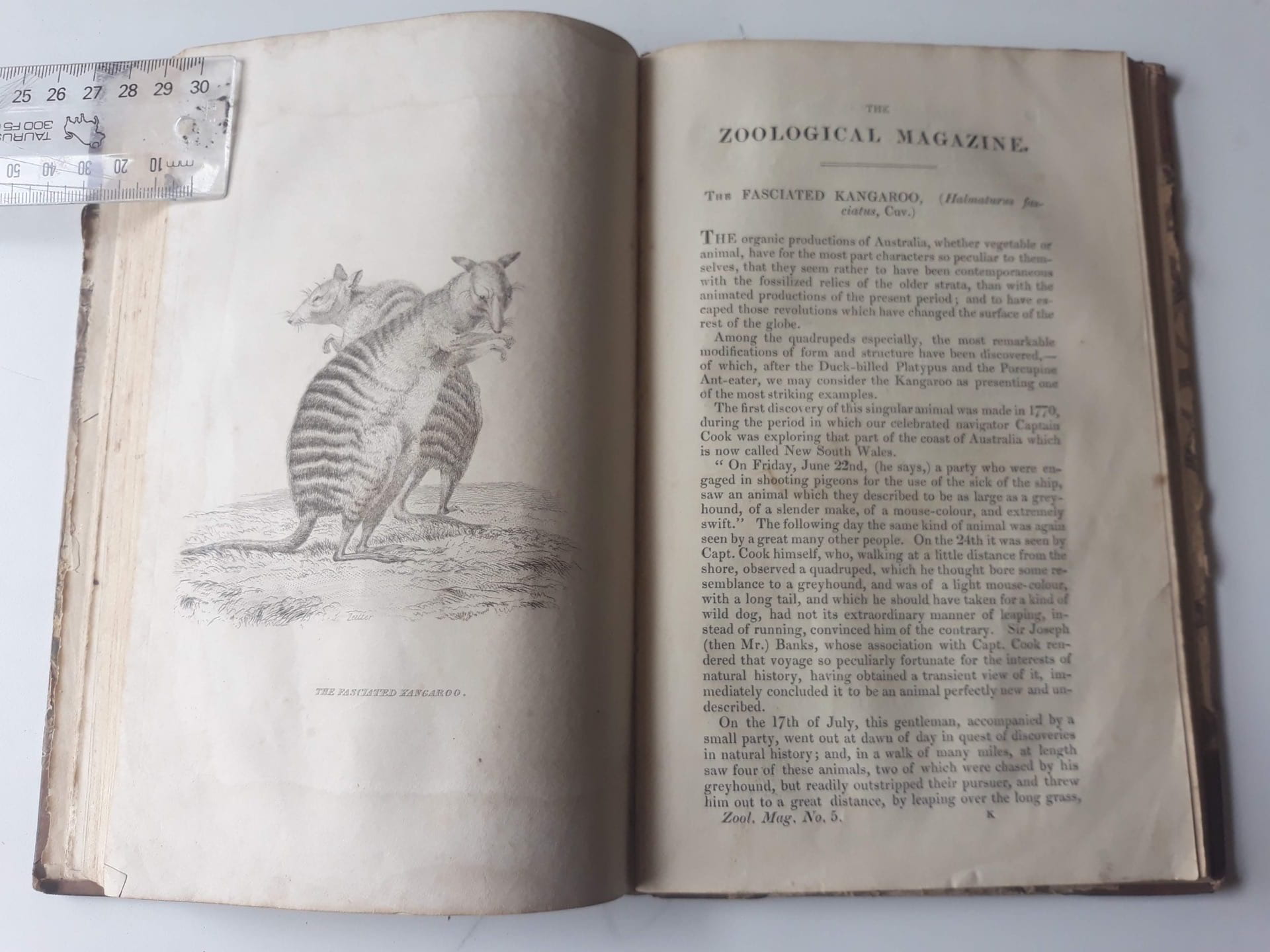
The present owner of Edwin’s book is his great great grand-daughter, artist Brenda Jane Briant who lives in the Bay of Islands and is the daughter of Godfrey Briant.
The Zoological Magazine is available online from the Biodiversity Library of the Natural History Museum, London. A 1857 edition (sixth edition) of A Dictionary of the New Zealand Language is available online from the New Zealand Electronic Text Collection (NZETC) and a 1852 edition (second edition) is available on Internet Archive.